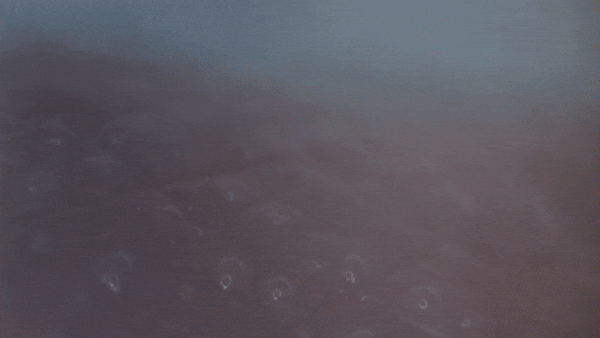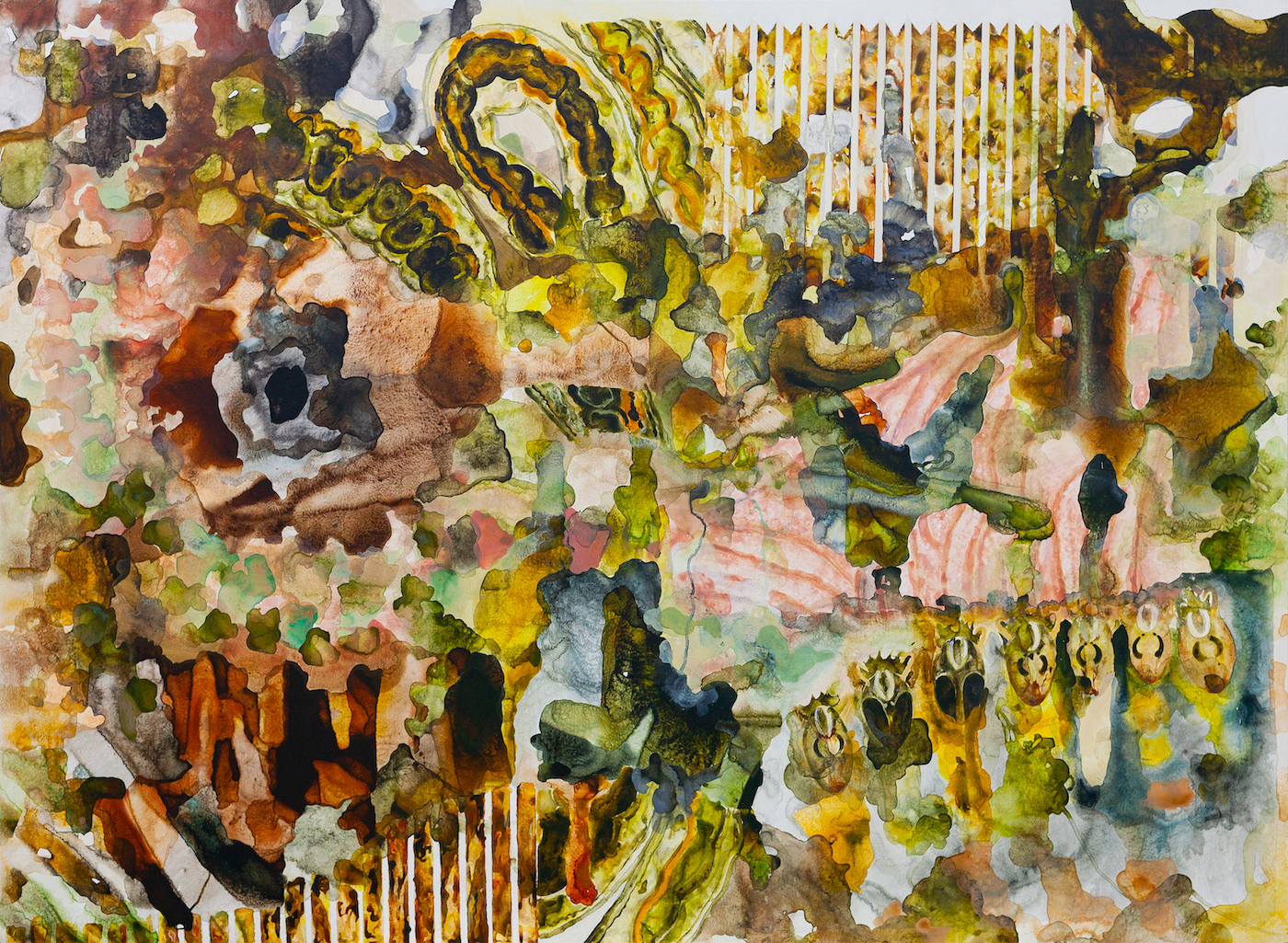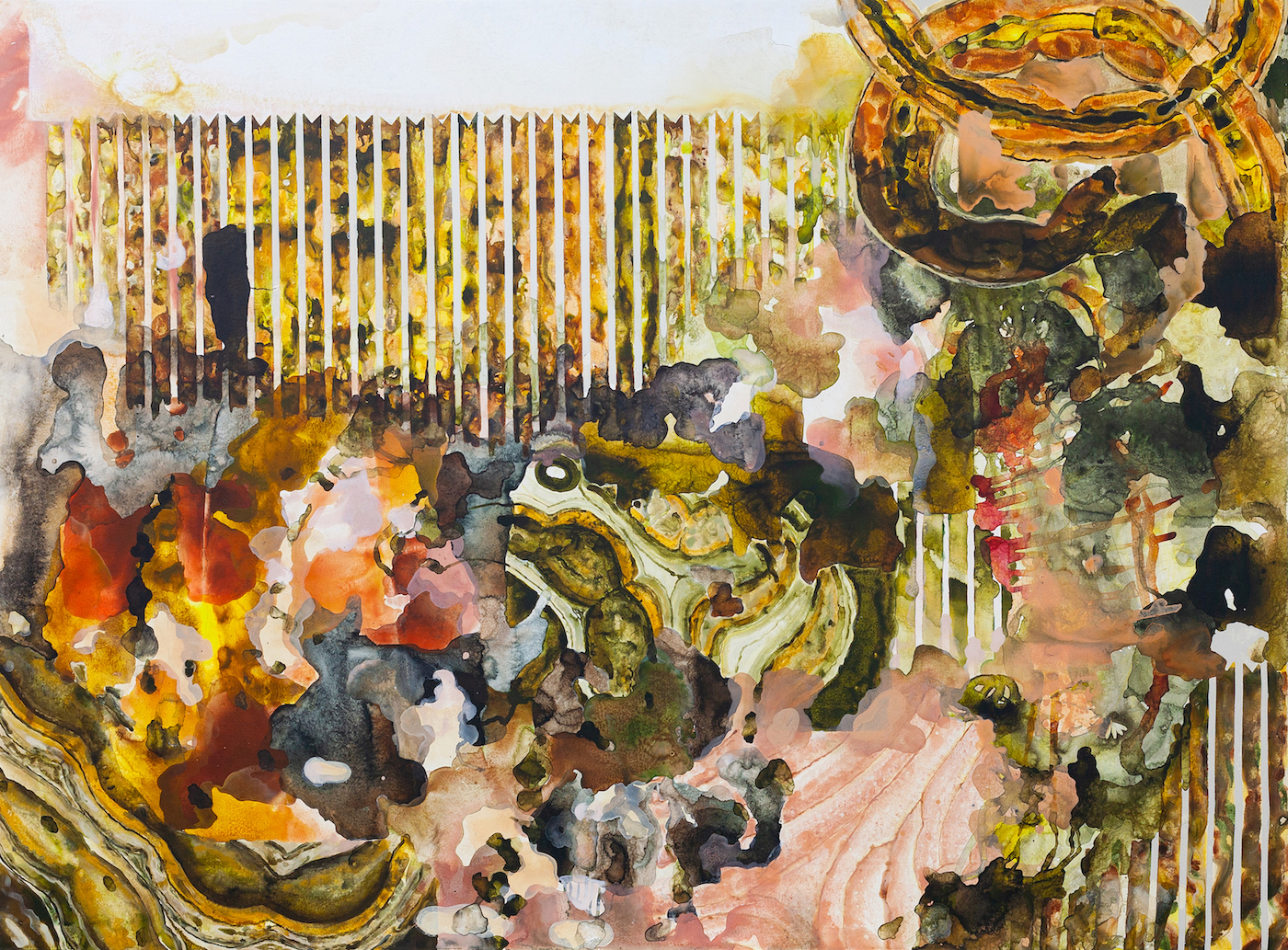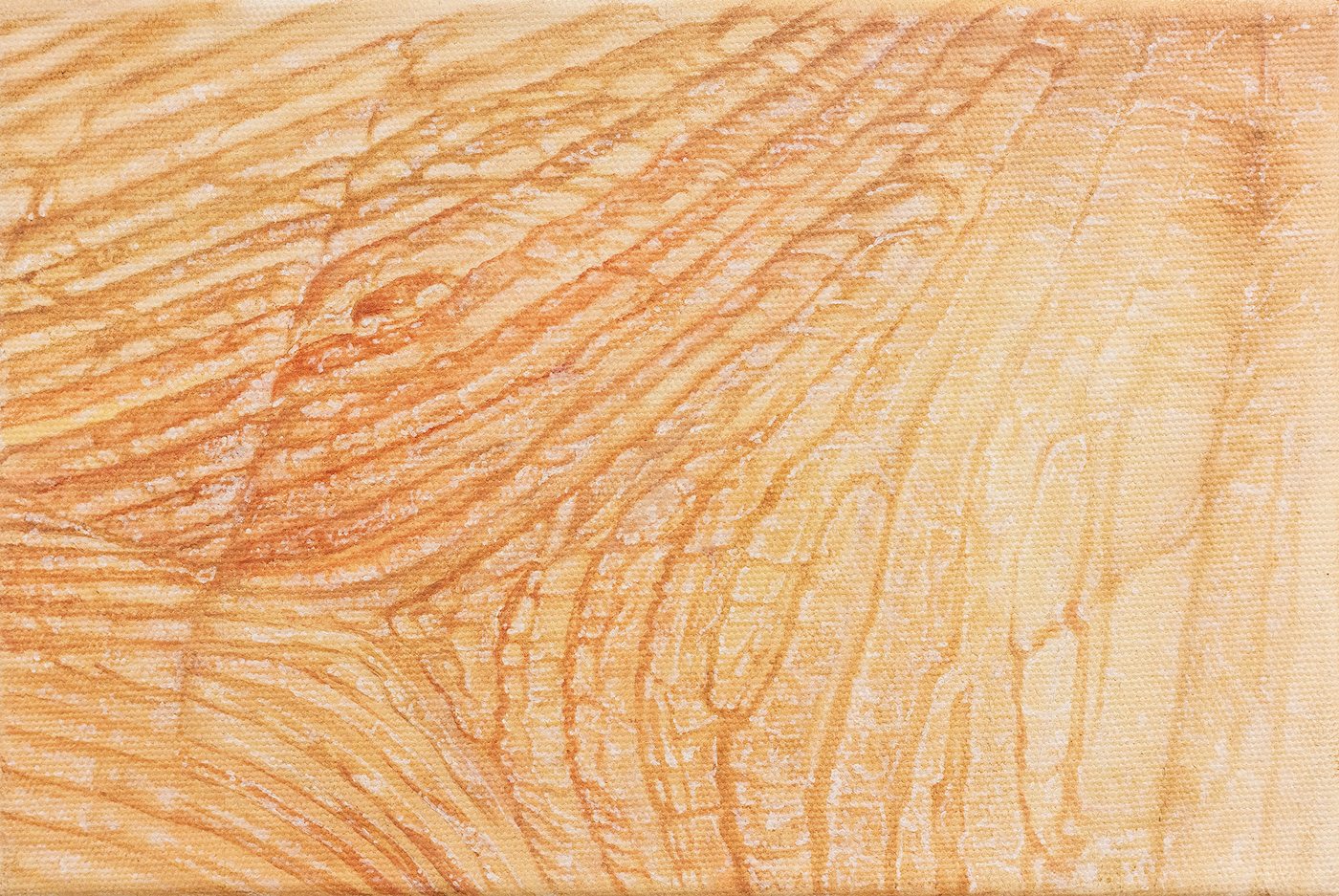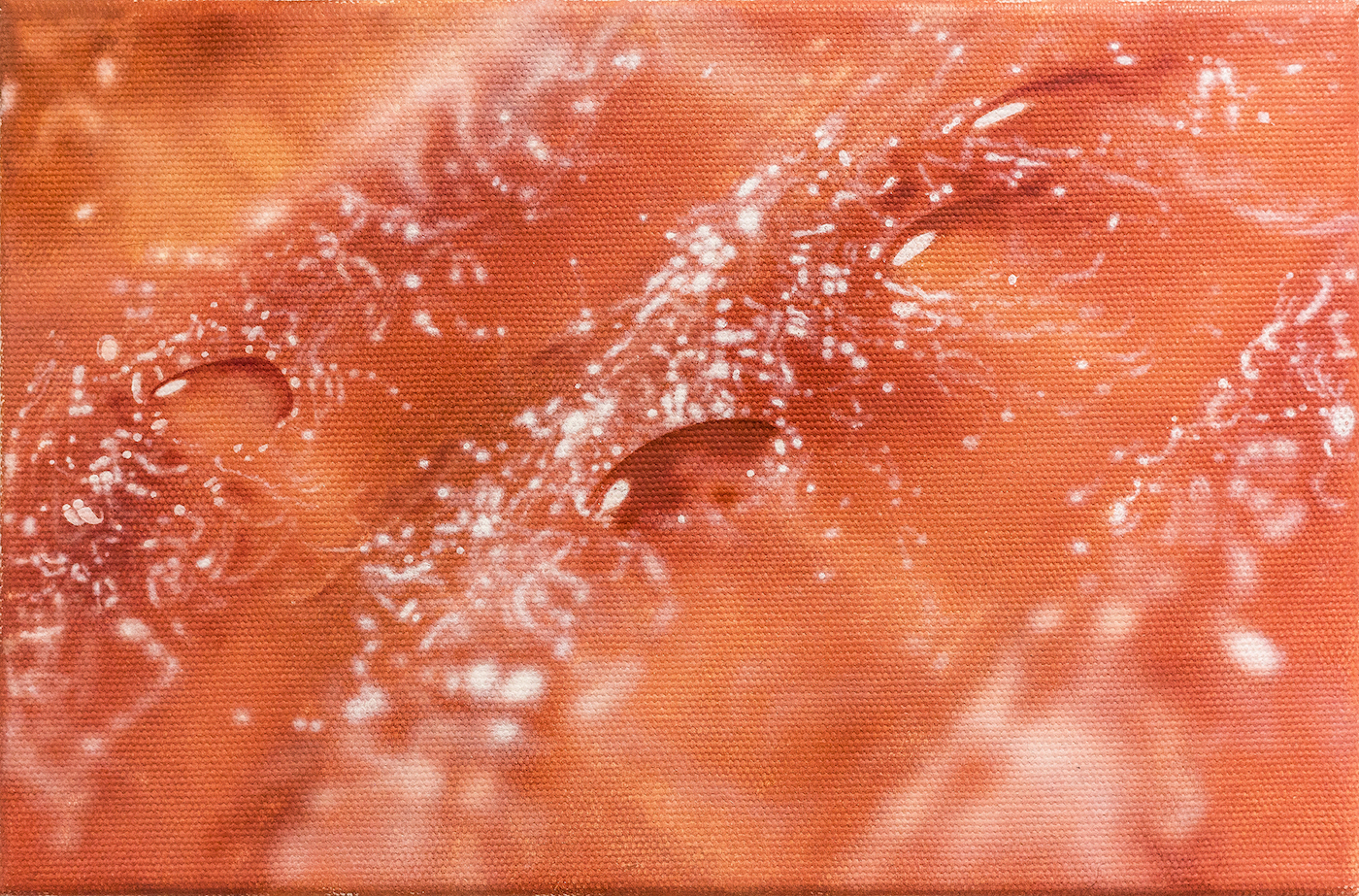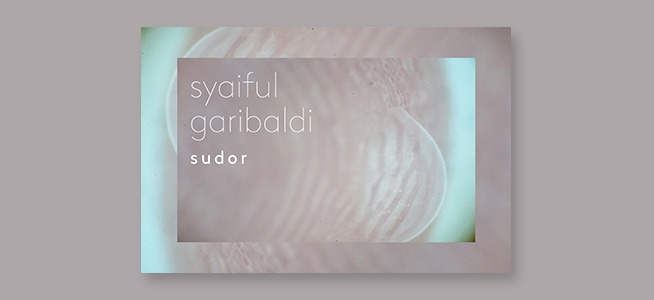
Installation Views
About
Syaiful Aulia Garibaldi (b. 1985 Jakarta, Indonesia) is a multidisciplinary artist who focuses on carefully observing the natural world and exploring the hidden layers and nuances behind its fundamental ecological systems and structures, which then form the basis of more conceptual explorations. Garibaldi's practice involves the study of natural organisms, whether it be under the lens of the microscope, or through the observation of phenomena in flora and fauna. Terhah, one of Garibaldi's ongoing projects, takes the form of an imaginary language, typographically referencing the way bacteria develops in a petri dish when provided an appropriate substrate and atmospheric condition. It is difficult to separate Terhah from Garibaldi's practice, as it is indicative of the direction in which his mental states take: he begins with the empirical, and then takes these references as building blocks for the subliminal, or the imaginative.
For his second solo exhibition in Manila, Philippines with Silverlens Galleries titled Sudor, Garibaldi introduces a new video work, Sudor Klasira #1 (2020), that looks at the corporeal from the perspective of human perspiration under different environmental conditions. Under high magnification, the surfaces of skin appear like mysterious, coral-toned extraterrestrial landscapes, with emergent bodies of water that ebb and flow, eventually evaporating into the air. This is Garibaldi's greatest strength: to engage his audience with regards to new ways of looking at the very familiar— in this case, the seemingly basic act of sweating— and through observation at high magnification, presents an immersive aesthetic experience. Included in the exhibition is a hygrometer made out of two found stones and a strand of hair, which measures the humidity conditions in the air, expressed simply through the extent by which the hair curls or straightens depending on the water content of the air around it.
Garibaldi also presents new large-scale paintings Sudor Klasira #2 (2020) and Sudor Klasira #3 (2020), which aggregate his recent projects into a comprehensive collage. These works take us into multiple complex visual languages as well as degrees of magnification while simultaneously intertwining representational forms with the abstract. In conversation with its abstraction, contained in this painting are images of an installation Garibaldi recently developed where lichen was grown on a long grid of oxidized metal bars on a hillside in Bandung, where he currently resides. Also incorporated is the digestive tract of a Tubifex worm under the microscope, as food is going through its intestines. In relation to each other, then, the video and paintings engage in dialogue regarding the moist conditions necessary for whole ecologies to come into existent, and therefore, flourish.
Words by Dea Aprilia
Syaiful Aulia Garibaldi was born in 1985 in Jakarta, Indonesia. He obtained a Bachelor’s Degree in Fine Arts from the Bandung Institute of Technology. Syaiful, fondly known as Tepu, previously pursued education in agronomy before pursuing experimental fine arts, where he applies his scientific background to create a conceptual foundation for his art. Tepu’s works show a remarkably strong vision of art that collides with science in a graceful manner. His creation of an immersive environment was sparked by his interest in the networked and interconnected nature of ecologies, and the evocative power of microorganisms as symbols of death and decay, as well as life. Infusion between art and science transcends through Tepu’s work and gives way to a new gateway of knowledge, which is illuminated within his prints and installations.
Tepu has been featured in numerous solo exhibitions, the most recent ones being Lemniscate at Mind Set Art Center, Taipei, Taiwan (2018), Limaciform at Silverlens Galleries, Manila, Philippines (2017), Quiescent at ROH Projects, Jakarta (2016) and Abiogenesis: Terhah Landscape at Pearl Lam, Singapore (2014). Tepu has been a part of major group exhibitions in various countries, such as Singapore, China, Taiwan, France, and Italy. The most recent ones include include Westbund TALENT at Westbund Art Centre in Shanghai, China (2017), the 2017 edition of Jogja Biennale and Art Stage Jakarta, Sea Plus Triennale at National Gallery, Jakarta (2016), and Prudential Eye Zone at Art Science Museum, Singapore (2015). Tepu currently works in Bandung, Indonesia.
Works
